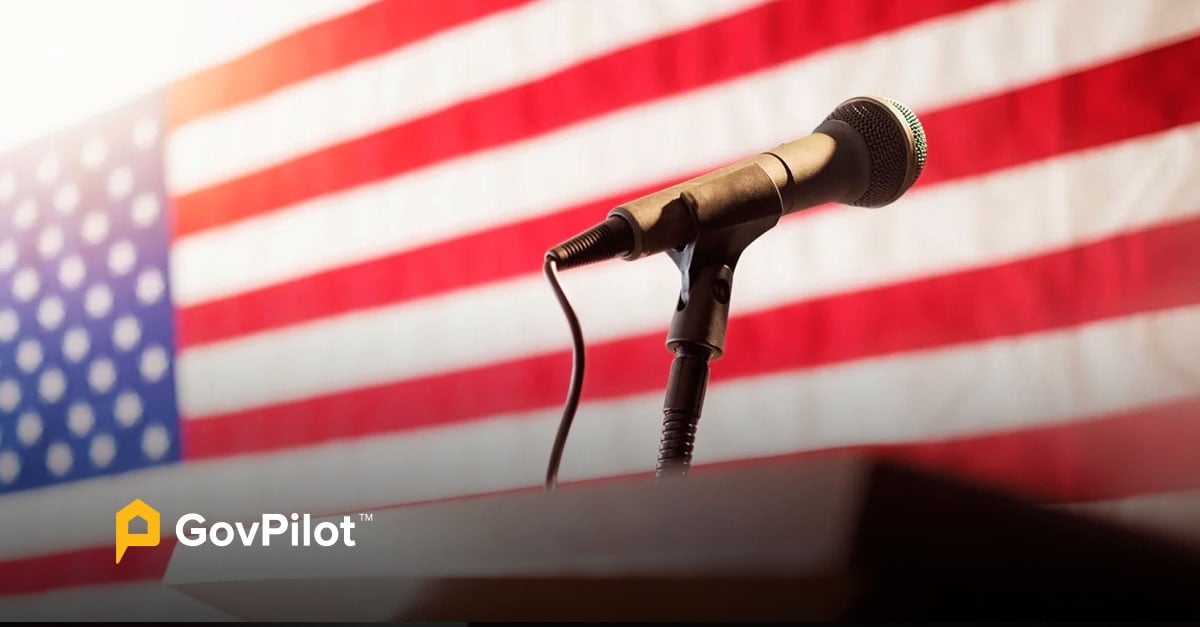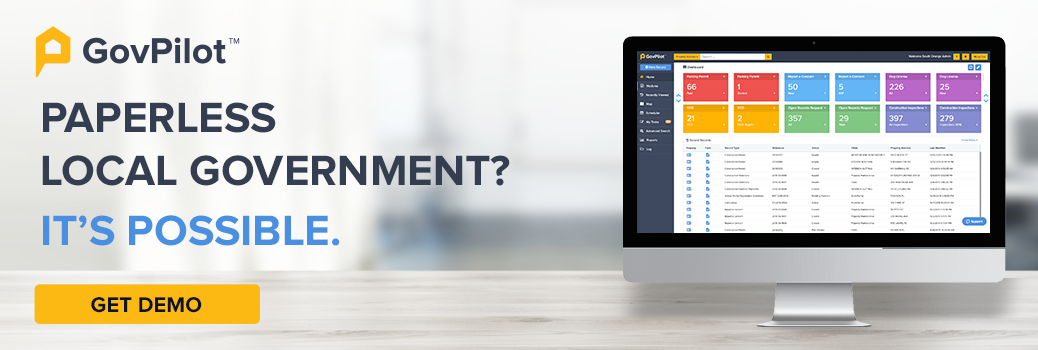In our ever-changing, complex world, clear and effective communication from local governments is not just a necessity — it’s the lifeblood keeping communities engaged, informed, and empowered. Press releases play a pivotal role in making this happen.
Everyday, local governments must share critical information with the public and media. However, if localities don’t take the right approach to crafting and promoting press releases, important announcements can go unnoticed. As a result, misinformation and mistrust can fester and spread quickly.
In this article, we’ll share expert tips on crafting an effective press release, key ways to promote press releases and government news, and even a template for local government press releases for you to follow.
Why Local Governments Need to Issue Press Releases
Government press releases do more than disseminate routine information. Press releases also highlight achievements, announce new initiatives, and address community concerns promptly and accurately.
When residents are well-informed of local government plans, policies, and changes, they’re more likely to participate in government and trust in its initiatives. Issuing press releases can also:
-
Assist in efficient service delivery
Help citizens understand what services are available, how to access them, and what to expect.
-
Foster a sense of community
Keep citizens informed and connected to their local government and each other.
-
Deliver timely and accurate information during emergencies
Prevent panic and confusion as a key component of your emergency management strategy.
Emergency management software makes it easier to pass critical information to citizens during a crisis. For example, you can mark a pin damaged areas on your local government GIS map and include the link to the map in your press release about weather damage.
-
Educate the public
Let citizens know about the workings of the government, its policies, the reasoning behind various decisions, and projected impact.
Prioritizing effective communications from your government to its citizens helps prevent the spread of misinformation, which can cause confusion, mistrust, and inefficiencies. Transparent communication with frequent press releases also promotes accountability, as citizens can keep track of what their local government is doing and voice their opinions or concerns.
Key Sections To Include In A Press Release
In order for government press releases to be picked up by the media and shared with the public, they must include certain information and be written in clear, simple language.
Here are the key sections to include in a government press release:
1. Heading
Include a concise, but direct title that clearly states the main topic of the press release. This is not a time to get creative. Make sure the title includes the main takeaway of the article and is not misleading to the reader. Keep in mind, many people only skim headlines and don’t read the rest.
2. Subheading
Directly under the heading is a brief one sentence summary of the press release. It elaborates on the heading by offering more context without delving into the main content of the release. It’s important that the subheading does not repeat what the heading already stated.
3. Date and Location
Always include the date and location to provide a contextual background to the press release. You never know which news outlet will pick up your press release. Depending on your message, the release could be published in another state or country!
4. Introduction
The first paragraph of the press release should give a concise overview of your announcement, covering the “four W’s”: who, what, where, when, and why. Keep this section short with only a few sentences.
5. Body
The rest of the press release should provide more detail. Include additional information not already shared, and any facts, statistics, and quotes from relevant sources. This section is where you provide all the necessary information related to your announcement.
6. Boilerplate
Towards the end of the press release, it’s common to include a brief description of the government department or agency issuing the press release. This is a standard section outlining the organization's mission, size, location, and significant achievements, among other details. Including this information helps to establish credibility and provide context to journalists writing a story.
7. Contact Information
Always remember to include contact details to direct media-related queries. This usually includes the name, phone number, and email address of a Public Information Officer. Directing the media to one point of contact is critical to ensure story consistency.
8. End Notation
At the very end, include three # symbols, centered directly underneath the last line of the release. While it may seem odd, including “###” is a standard industry practice to signify that all vital information has been provided. The practice originated during the telegraph era, but it’s still used today.
9. Notes to Editors
For some government news, you may want to offer journalists extra information that offers additional context to the story. You may also need to request that certain information remain confidential. This section should only include background information or facts that are not part of the main news.
Check out GovPilot’s recent, “Westampton, New Jersey Pursues Digital Citizen Concern Reporting” press release example as a prompt for guiding your future press release writing.
Common Reasons Local Governments and Politicians Should Issue Press Releases
Beyond communicating urgent information during emergencies, there are many situations where local governments and the emergency management department may want to communicate with the public by issuing a press release:
-
Onboarding new government technology
A local government may want to issue a press release about using municipal software for a number of reasons. First, keeping the public informed about where their tax dollars are being spent improves transparency. Second, by demonstrating that your agency is leveraging technology to improve efficiency and service delivery builds trust with the public.
Here are a few types of technology to highlight in a press release:
-
Online permitting software
Spreading the word about upgrading to new permitting software can bolster trust in your development review process, and let business-owners and citizens know that they can submit permit and licensing applications digitally.
Developers may be incentivized to come to your locality knowing your permitting process is streamlined and projects can be completed more quickly with new technology.
Here are more details about How Permitting Software Works.
-
Digital fee and fine processing
Letting residents know about a new, convenient way to pay fees and fines can ease the burden of paper processes as more residents switch to a digital option.
Here are the Benefits of Digital Government Fee & Fine Collection and the Best Municipal Credit Card Processing Partners that integrate with GovPilot.
-
Report a concern
Offering residents a quick and convenient way to report a concern is an easy way to improve the customer experience by allowing citizens to report non-emergency issues to their local government officials such as code violations and potholes.
Releasing a press release about incorporating GovPilot’s GovAlert application into your local government website design is a great way to ensure citizens know that they have a means to communicate with their city department leaders.
-
Upcoming street and bridge closures and repairs
Sending out press releases to inform communities of upcoming road and bridge closures (or unexpected closures due to weather issues, flooding, etc.) ensures residents, businesses, and other services have ample time to prepare. Some infrastructure projects can last months, if not years. In these situations, it’s critical to keep the public informed with frequent press releases.
How Can the Infrastructure Bill Help with Local Roads, Bridges, & More? Here’s what to know.
-
Conveying public health information
Local governments play a crucial role in disseminating information to keep the public informed and safe. Issuing press releases to convey public health information, such as vaccination campaigns, government administered STD & COVID testing, health advisories, public-facing health department technology investments, or wellness programs, can encourage participation, educate the public during public health emergencies, and control the spread of illness.
Tips For Writing A Great Government Press Release
1. Keep it brief and concise
Press releases should be no more than one page, and written in plain language that’s simple and straightforward.
2. Include multimedia
Images, videos, infographics, charts, or other multimedia can make your press release more engaging and easier to share on social media.
3. Use the inverted pyramid structure
Place the most important information at the beginning, with additional details following in order of decreasing importance.
4. Proofread carefully
Always proofread your press release to catch any mistakes, typos, or inconsistencies. One misplaced word or letter can dramatically change the context of your message.
5. Timing is key
While this may not apply during times of crisis, try to distribute your more routine press releases at a time when they’re most likely to be seen. Early in the week and early in the day are often best.
Best Ways to Promote Government Press Releases
Once you’ve written the press release, now it’s time to promote it. In this digital age, there are countless ways to get the word out. Ultimately you’ll want to choose the method that makes most sense for the message you are conveying and your intended audience.
-
Host a press conference
If your press release includes a major announcement or change, consider hosting a press conference. This is not only a more personal approach, but it can generate more media coverage and public interest.
Also be sure to bring important news up at local public meetings.
-
Share on a top press release platform
Uploading your press release to a press release platform, like PR Newswire, Business Wire, or EIN Presswire, can expand your reach to journalists, bloggers, consumers and more.
-
Post on government website
Publish the press release on your government website to provide a credible source of information for the public and media.
-
Share on government social media accounts
Depending on your message and audience, you may want to share the press release on some, or all, government social media channels. This is also a great way to engage with residents and pick up on concerns early.
-
Reach out to local media outlets
Proactively reaching out to local newspapers, radio stations, and TV channels to cover your press release is a best practice. Giving your local journalists the first opportunity to report can also build trust between city hall and the media.
Checkout this GovTech article about GovPilot’s government special needs registration software that came as a result of a press release!
Embrace Government Software Worth Promoting with GovPilot
Local governments stand on the brink of a transformative era powered by innovative government software like GovPilot. But this potential can only be realized if the technology is used and promoted. If your locality is ready to embrace the digital revolution, schedule a demo with GovPilot today.
Political Press Release FAQs
-
What is a press release in government?
A press release is an official statement or announcement issued to the media by a government body. The purpose of a press release in government is to provide information on government initiatives, policies, or events in a newsworthy format that’s easily accessible to journalists and the public.
-
How to make a press release when announcing a political campaign?
Creating a press release for announcing a political campaign requires strategic planning, clear messaging, and an understanding of your audience. Consider discussing your political platform, issues you’ll focus on, your qualifications, and why you believe you're the best candidate. By following the press release format outlined in this article and including quotes from the candidate, you can create an engaging and personalized press release to announce a political campaign.
Read more from the Government Trends blog:









